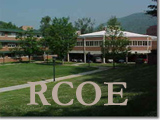Competency
13.2 “Use Media And Technology To Address
Differences In Children’s Learning And Performance”
Context
As a future teacher I realize I will have students in my classroom that learn different and may need to use technology in different ways. To assist those students I explored the computer for more accessible options. I went to the start button to Settings, then control panel and clicked on the “Mouse” icon. I could change the mouse to access someone who may have trouble using his or her hands. I altered the mouse to access a right-handed person or left-handed person. I could also adjust the speed of the mouse. I changed it from fast to slow, which may help a student who has trouble with coordination. The mouse may possibly be too fast for the student to keep up with. As well as changing the mouse I went to the control panel again and double clicked on “Accessibility Options.” Once there I clicked on the “Display” tab and turned on the “High Contrast” by clicking apply. By using this accessible option I changed the page to a black background with white letters. This is a great option for students who may have visual problems and need help with reading the computer screen. To learn more about students with learning disabilities I went to the website, www.ldonline.org. On the website is an article called, “First Person.” The article was about a famous actor who has suffered from dyslexia his entire life and gave helpful information about how to deal with students who suffer from the same disability. I also found a link on the page that explained how to teach students with ADD and printed out the page to keep when I begin to teach. I also went to the website, http://www.check-it-out.org/assist.cfm that helps disabled people who use assistive technology. Assistive technology is “any item, piece of equipment or product system, whether acquired commercially off the shelf, modified, or customized, that is used to increase, maintain, or improve functional capabilities of individuals with disabilities. [20 U.S.C. Chapter 33, Section 1401 925)].” I printed the homepage from the site to get an idea of what exactly assistive technology does for disabled people.
Impact
I am aware that all students are not going to be the same and I will have students in my class with learning disabilities. I may have a student in my class who is missing one of their limbs and may need the mouse adjusted for easier use. I could change the mouse settings to meet the student’s need. These resources are useful to help students who have special needs and also helpful to me as a future teacher in assisting those students.
Alignment
These resources are useful and by accessing them I met competency goal
13.2 because I learned how to make use of adaptive technology to accommodate
any special needs students in my classroom. I know now how to help
special students use media and technology to meet their differences in
performing.
